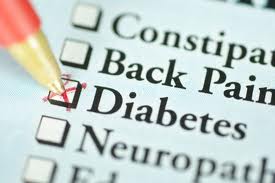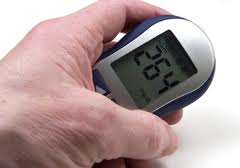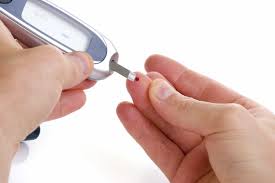Connect With Us
What Is Diabetes?
Diabetes, or Diabetes mellitus, is a group of diseases characterized by high blood glucose levels that result from defects in the body's ability to produce and/or use insulin.
Types of Diabetes
 There are three main types of Diabetes mellitus.
There are three main types of Diabetes mellitus.
- Type1 Diabetes: In Type 1 Diabetes, the body fails to produce insulin altogether. Patients with this type of Diabetes must constantly infuse insulin into their bodies, either with injections or with an insulin pump. Type 1 Diabetes used to be called “juvenile diabetes” and “Insulin-dependent diabetes mellitus“ (IDDM).
- Type 2 Diabetes: Type 2 Diabetes results from a resistance to insulin, which develops over time. Eventually, the cells that produce insulin fail to do their job properly, resulting in an acquired insulin deficiency. Type 2 Diabetes was previously called “adult onset diabetes” or “non insulin-dependent diabetes mellitus” (NIDDM).
- Gestational Diabetes: This type of Diabetes occurs in pregnant women without a previous diagnosis of Diabetes mellitus. Women who develop gestational diabetes are at higher risk for later developing Type 2 Diabetes.
Signs and Symptoms of Diabetes
The classical symptoms of untreated DM are:
- Weight loss
- Frequent urination (polyuria)
- Increased thirst (polydipsia)
- Increased hunger (polyphagia)
Symptoms may develop rapidly in Type 1 Diabetes, but may develop slowly or not at all in Type 2 Diabetes.
Diagnosis of Diabetes
Diabetes is diagnosed by checking the plasma glucose, or blood sugar, levels. Normal blood sugar is 70-100 mg/dl. A rondom blood glucose over 200 mg/dl or a fasting blood glucose greater than 126 mg/dl are diagnostic for Diabetes mellitus. Typically, abnormal results are done a second time before an official diagnosis is made.

Another type of test known as a “Hemoglobin A1C” or glycated hemoglobin can be diagnostic as well. This test is an average of the blood sugar levels over the previous 3 months. It then, perhaps, gives a better picture of what a person’s blood sugar trends are. A HbA1c less that 6% is considered normal. A HbA1C greater than or equal to 6.5% is also diagnostic for Diabetes mellitus.
Treatment of Diabetes
Left untreated, Diabetes can cause many complications. Most of which develop from Diabetic Neuropathy and Peripheral Vascular Disease. Other serious consequences of untreated DM include heart disease, kidney disease/failure, amputation from foot related complications.
- Type 1 Diabetes: This type is treated with insulin.
- Type 2 Diabetes: This type may be treated with diet, oral medications, insulin, or a combination of these.
- Gestational Diabetes: This typically resolves after delivery.


Patient education, understanding, and participation is vital, since the complications of diabetes are far less common and less severe in people who have well-managed blood sugar levels. The goal of treatment is an HbA1C level of 6.5%, but should not be lower than that, and may be set higher. Attention is also paid to other health problems that may accelerate the deleterious effects of diabetes. These include smoking, elevated cholesterol levels, obesity, high blood pressure, and lack of regular exercise. Specialized footwear, or Diabetic shoes, are widely used to reduce the risk of ulceration, or re-ulceration, in at-risk diabetic feet.
The Podiatrists at Academy Foot and Ankle Specialists specialize in prevention and treatment of complications of the foot and ankle secondary to Diabetes mellitus. If you have Diabetes, you should see a podiatrist on a regular basis. Most of the early signs and symptoms of Diabetes can be found and treated in their early stages. Contact us today at 817-424-3668 or make and appointment online.
